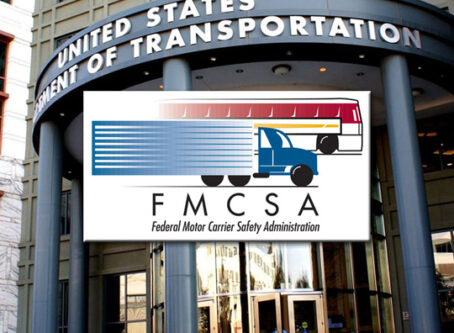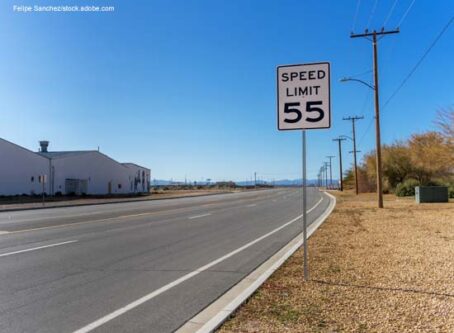HURRICANE MICHAEL: Strongest storm in Florida Panhandle history makes landfall
Hurricane Michael unexpectedly reached Category 4 status before reaching landfall near the Florida Panhandle on Wednesday, Oct. 10. As local, state and federal government agencies prepare, the Federal Motor Carrier Safety Administration has issued a regional emergency declaration while ports are across the region are either closed or open with restrictions.
On Wednesday, Oct. 10, FMCSA issued a regional emergency declaration for areas expected to be affected by Hurricane Michael. States affected by the emergency declaration include Alabama, Florida, Georgia, Louisiana, Mississippi, North Carolina, South Carolina and Tennessee. Certain Federal Motor Carrier Safety Regulations are exempt for drivers directly supplying relief efforts.
Our Midwest crews are on their way to Florida with all-terrain vehicles and specialized equipment, to support Hurricane #Michael restoration efforts. This equipment makes all the difference when crews are faced with swamped terrain and flooded roads. pic.twitter.com/kucY6Zz08V
— Duke Energy (@DukeEnergy) October 10, 2018
Florida Gov. Rick Scott has declared a state of emergency for 35 counties. On Tuesday, Oct. 9, President Donald Trump approved of Gov. Scott’s request for a pre-landfall emergency declaration. Trump’s declaration allows Florida access to federal resources, including personnel, equipment, supplies and funding.
Although no major closures are being reported as of publication time, the Florida Department of Transportation has suspended tolls effective immediately in the Northwest Florida region. Tolls will be suspended at the following facilities:
- Mid-Bay Bridge and Spence Parkway (Okaloosa County).
- Garcon Point Bridge (Santa Rosa County).
- Bob Sikes Toll Bridge (Escambia County).
- Orchard Pond Parkway (Leon County).
Beginning at 6 p.m. Wednesday, the Sidney Lanier Bridge on U.S. 17/SR 25 in Glynn County, Ga., will be closed. The Georgia Department of Transportation expects gale-force winds to affect the area. State DOTs across the southeast region are warning motorists to drive with caution when crossing bridges in affected areas.
According to the U.S. Coast Guard, the following ports have been closed:
- Cedar Key.
- Panama City.
- Pensacola.
- Chattahoochee River (closed north of Walter F. George Lock and Dam).Gulf Intracoastal Waterway (from MM 166 East).
The following ports are open with restrictions:
- Brunswick.
- Egmont Key.
- Gulfport.
- Mobile.
- Pascagoula.
- Savannah.
Airports in Florida have canceled most or all commercial flights. Tallahassee International Airport has canceled all commercial flights until 8 a.m. on Thursday, Oct. 11. Only military and emergency relief flights are allowed. Okaloosa County Airports, including Destin-Fort Walton Beach Airport (VPS), Destin Executive Airport (DTS) and Bob Sikes Airport (CEW) also closed on Wednesday indefinitely. Pensacola International Airport is also closed until further notice.
There were more than 250,000 power outages in Florida, according to PowerOutage.us. All the outages were located within the panhandle as of 4 p.m. Eastern.
At approximately 2 p.m. Eastern, Hurricane Michael made landfall near Panama City, Fla., as a Category 4 storm with maximum sustained winds of 155 mph and minimum central pressure of 919 mb.
A turn toward the northeast is expected Wednesday night, according to the National Hurricane Center. A motion toward the northeast at a faster forward speed is forecast on Thursday through Friday night. Michael’s core will move inland across the Florida Panhandle on Wednesday afternoon, and across southeastern Alabama and southwestern Georgia on Wednesday night. Michael will move northeastward across the southeastern United States through Thursday night, and then move off the Mid-Atlantic coast away from the United States on Friday.
Potential peak surges include:
- Tyndall Air Force Base, Fla., to Aucilla River, Fla. – 9 to 14 feet.
- Okaloosa/Walton County Line, Fla., to Tyndall Air Force Base – 6 to 9 feet.
- Aucilla River to Cedar Key, Fla. – 6 to 9 feet.
- Cedar Key to Chassahowitzka. Fla. – 4 to 6 feet.
- Chassahowitzka to Anna Maria Island, Fla. (including Tampa Bay) – 2 to 4 feet.
- Sound side of the North Carolina Outer Banks from Ocracoke Inlet to Duck – 2 to 4 feet.
The Florida Panhandle, Big Bend, southeast Alabama and southern Georgia can expect 4-8 inches of rainfall, with isolated maximums up to 12 inches. Eastern Georgia, the Carolinas and Southern Virginia can get up to 3-6 inches. These rainfall forecasts can lead to life-threatening flash floods.
Hurricane Michael is the only Category 4 storm to make landfall directly on Panama City. Only three Category 3 storms have hit directly on Panama City. The last one was in 1894 with winds of approximately 120 mph. No Category 4 or 5 storm has made landfall on the Florida Panhandle since hurricane records began in 1851, according to data from the National Hurricane Center.
Other major hurricanes (Category 3 or higher) have hit the panhandle or near it. Hurricane Ivan struck Gulf Shores, Ala., as a Category 3 in 2004, becoming the ninth costliest U.S. Atlantic hurricane with $20.5 billion in damage. In 1995, Hurricane Opal struck Pensacola Beach as a Category 3. Only a dozen major hurricanes have hit northwest Florida since 1851, all Category 3 storms.









